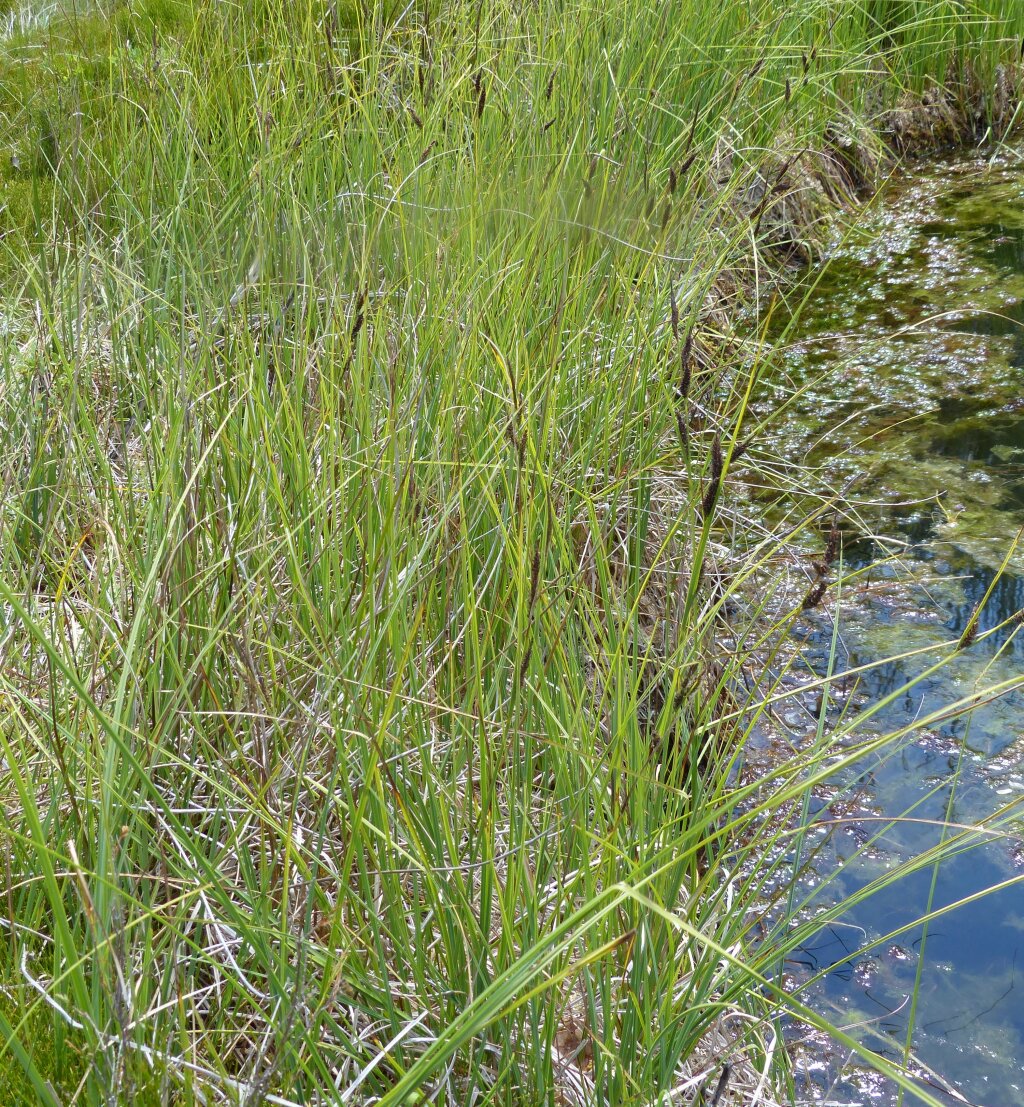Carex gaudichaudiana
Kunth Fen SedgeRhizome long; shoots ± loosely tufted. Culms erect, triquetrous, scabrous, 10–90 cm long, c. 1 mm diam. Leaves exceeding culms, 2–4 mm wide, dark green, margins antrorsely scabrous; sheath pale yellow-brown to orange-brown; ligule acute. Inflorescence erect, 7–18 cm long, with 3–8 spikes solitary at nodes; lowest involucral bract shorter than inflorescence. Spikes sessile to subsessile, distant, erect to spreading at maturity; upper 1 or 2 spikes male, 2.5–6.5 cm long; lower spikes female or often male at apex or base, 1.5–6.5 cm long; glumes often shortly mucronate, very dark red-brown with paler midrib, or rarely male glumes mostly stramineous; male glumes subacute to acute, occasionally obtuse; female glumes obtuse to acute, 2.8-3.5 mm long; utricles 2.7–4.5 mm long, 1.5–2.0 mm diam., ovoid to ellipsoid, numerous-nerved, minutely papillose at least near apex, pale green to brown, often red-dotted; beak c. 0.3 mm long, with apex notched to truncate and occasionally minutely hispid; style 2-fid, or occasionally 3-fid in a few flowers within an inflorescence. Nut globose to obovoid, lenticular, dark yellow-brown. Flowers spring–summer.
Wim, GleP, VVP, VRiv, MuF, GipP, OtP, WaP, Gold, CVU, GGr, DunT, NIS, EGL, EGU, WPro, HSF, HNF, Strz, MonT, HFE, VAlp. Also Qld, NSW, Tas. New Guinea, New Zealand, Asia. Widespread, mostly in cooler areas, occasional in the north (e.g. Warby Ranges, Barmah), almost ubiquitous in alpine swamps, fens and slow-flowing streams.
The uppermost male spikes are characteristically much longer than the lower spikes.
Wilson, K.L. (1994). Cyperaceae. In: Walsh, N.G.; Entwisle, T.J., Flora of Victoria Vol. 2, Ferns and Allied Plants, Conifers and Monocotyledons, pp. 238–356. Inkata Press, Melbourne.
 Spinning
Spinning


